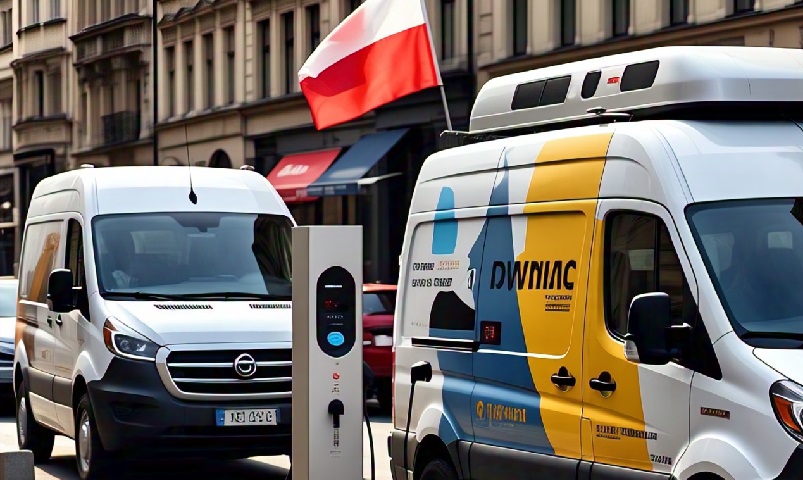Poland’s e-mobility market kicked off 2025 with a solid performance, registering a substantial year-on-year growth in battery electric vehicle (BEV) adoption, according to the latest data from the Polish Automotive Industry Association (PZPM) and the Polish Association of Alternative Fuels (PSNM).
At the end of the first quarter, 87,461 fully electric passenger and light commercial vehicles were on Polish roads — an increase of 22% compared to the same period in 2024.
The sharp rise in registrations was largely attributed to the rollout of “NaszEauto“, a government-backed incentive programme targeting individual buyers.
According to Jakub Faryś, President of PZPM, the initiative has proven to be a decisive factor:
“The increase in passenger vehicle registrations stems from the introduction of the NaszEauto programme.”
“Should the Ministry of Climate and Environment decide to expand the scheme to cover commercial vehicles or institutional buyers, we can expect even stronger growth,” he adds.
Delivery segment in reverse after “Mój Elektryk” phase-out
In stark contrast, registrations of zero-emission vans (category N1) fell significantly in Q1.
This downturn follows the termination of the “Mój Elektryk” incentive programme, which previously supported the adoption of electric light commercial vehicles (eLCVs).
Jan Wiśniewski, Director of the PSNM Research and Analysis Centre, warns that this decline represents a missed opportunity:
“Following the end of Mój Elektryk, Poland is facing a severe shortage of incentives for category N1 electric vans. Registrations dropped by double digits year-on-year, while the passenger segment surged thanks to NaszEauto.”
He continues: “It’s a lost chance to speed up electrification—especially since BEV vans are now widely available and well-suited for urban logistics.”
Both associations are urging policymakers to swiftly revise Poland’s National Recovery Plan (KPO) to include targeted support for eLCVs, thereby preventing the delivery segment from becoming a bottleneck in the electrification process.
Heavy-duty zero-emission vehicles: Potential still untapped
Despite noticeable relative increases, the number of zero-emission vehicles over 16 tonnes remains modest when compared to other European countries.
Faryś notes that this could change soon, pending the launch of a dedicated incentive programme:
“Recent growth rates in heavy-duty BEV registrations are promising, but absolute numbers are still low. Once the tailored programme is in place, and especially with the upcoming support schemes for truck chargers and infrastructure, we expect a strong acceleration.”
In total, the Polish Government has allocated six billion złoty (approximately 1.4 billion euros) to these three new programmes, underlining its commitment to a broader zero-emission transport strategy.
Charging infrastructure maintains momentum
Parallel to the uptick in vehicle numbers, charging infrastructure development in Poland remains robust.
As of March 2025, the country boasted 9,342 public charging points.
Of these, 32% are fast DC chargers, while the remaining 68% are AC chargers with a power output of up to 22 kW.
This ratio indicates a balanced development strategy, providing both fast and standard charging options to meet diverse user needs.
What’s next for Polish e-mobility?
The current dynamics highlight both the strengths and vulnerabilities of Poland’s e-mobility transition.
While passenger vehicle adoption continues to thrive, the slowdown in commercial segments raises concerns about a potentially uneven transformation.
Experts from PSNM and PZPM stress the need for comprehensive and consistent policy support, including:
- Extension of NaszEauto to cover vans and institutions.
- Swift activation of the KPO-funded eLCV incentive.
- Deployment of programmes for zero-emission heavy trucks and related infrastructure.
As Wiśniewski summarises: “We have a growing model range for BEV vans, a clear demand for urban logistics, and sizeable funds earmarked for e-mobility. What we lack is the mechanism to bring it all together. A strategic update is essential.”
READ MORE
-
6 days left: How to make EV charging stations reliable, visible and durable?
On 5 November, Data Modul will host a web seminar on HMI solutions for EV charging stations — a must-attend event for manufacturers seeking to innovate and optimise their products.
-
Rightcharge secures £1.6M to boost EV charging payments for Europe’s fleets
Public charging remains fragmented and reimbursing employees for home charging is often slow and error-prone. However, fleets using Rightcharge can reduce charging costs by up to 90%.
-
Strong demand for France’s social EV leasing with 41,500 cars already leased
To date, over 41,500 vehicles have been leased, including more than 11,360 by beneficiaries who live or work in areas where air quality is a concern.










